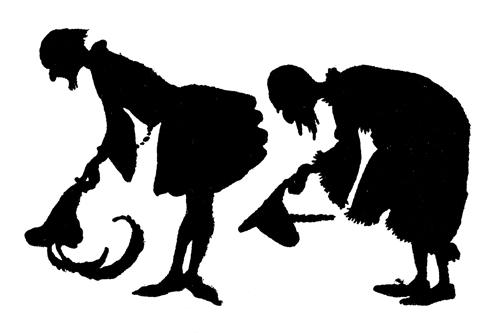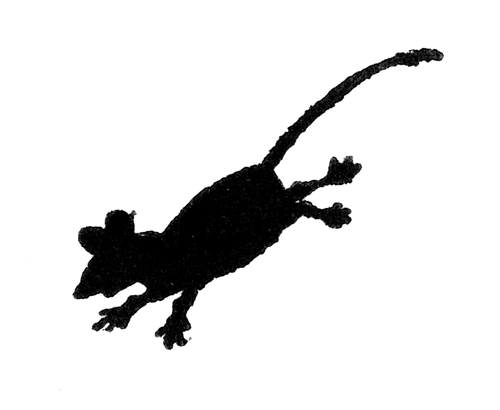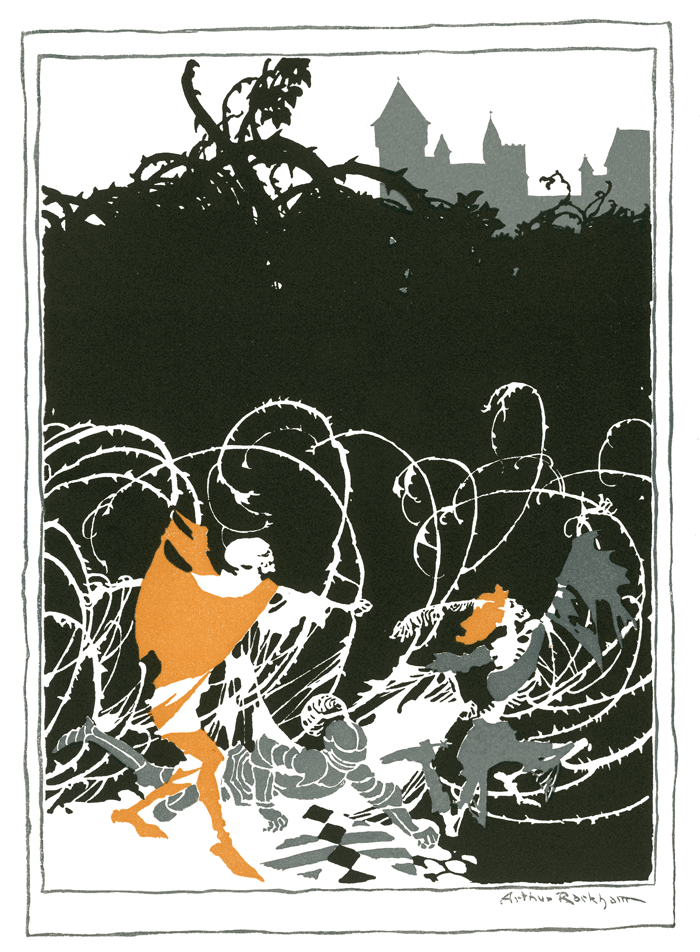
One of the most magical and memorable children’s stories ever written, J. M. Barrie’s Peter Pan and Wendy will delight young readers in this stunning large-format Folio edition with Debra McFarlane’s nostalgic etchings.
Illustrated by Arthur Rackham
Limited to 750 hand-numbered copies
Retold by C. S. Evans
Facsimiles of the original de luxe editions published in 1919 and 1920 and illustrated throughout in silhouette
A limited edition of two masterpieces of silhouette illustration by Arthur Rackham, a giant of the Golden Age of illustration. These delightful retellings of classic fairytales have been faithfully recreated from copies first published in 1919 and 1920.Cinderella is a facsimile of number 54 from the original Edition de luxe of 850 copies and The Sleeping Beauty, published a year later, is a facsimile of number 618 of 625 copies. The facsimiles, with matching numbers from our limitation of 750, are housed together in an elegant presentation box.
Limited to 750 hand-numbered copies
Quarter-bound in cloth with art parchment sides blocked in gold
120 pages
One tipped-in colour illustration. Four silhouette illustrations heightened with colour. Numerous black and white illustrations including head and tail pieces in each book
Decorative endpapers
Presentation box bound in green cloth blocked in black and gold
Gilded top edges
11¼” x 9”
A giant of the Golden Age of British book illustration, Arthur Rackham’s instantly recognisable interpretations of beloved classics, from Peter Pan in Kensington Gardens to A Christmas Carol, have enchanted generations of adults and children alike.
I cannot remember the time when I hadn’t a pencil in my hand and from the very first my bent was toward the fantastic and the imaginative
- Arthur Rackham
A late starter, Rackham worked as an insurance clerk, then struggled as a caricaturist and pictorial journalist, before developing his signature style – meticulous ink drawings enhanced by delicate watercolour washes – and finding his true calling as an illustrator of fantasies and fables, capable of conjuring up ethereal fairies, terrifying witches and twisted humanised trees.
Nothing less than the best that can be had, cost what it may… is good enough for those early impressionable years when standards are formed for life
- Arthur Rackham
During the first decade of the 20th century, Rackham was the uncrowned king of the thriving Edwardian gift-book market. The publication of ‘this year’s Rackham’ was a highly anticipated event in the build-up to Christmas, and a carefully timed exhibition of the original artwork for his forthcoming book was held annually at the Leicester Galleries in London, to generate further excitement. Rackham’s publisher, William Heinemann, also pioneered a new strategy to cater for true devotees – releasing a beautifully printed and bound limited ‘edition de luxe’, numbered and signed by Rackham himself, alongside the standard trade edition.
But in the immediate aftermath of the First World War, the demand for such lavish and expensive books was uncertain, and Rackham feared that his style of illustration was falling out of favour in the face of modern artistic developments. The response to this double challenge was a master-stroke – the ‘Rackham’ for 1919, a retelling of Cinderella, would be illustrated throughout in silhouette, simultaneously showcasing an unexpected dimension of his work and taking advantage of the lower costs of black and white printing. The book was an instant triumph, proving so successful that Rackham followed it up in 1920 with his second – and final – silhouette masterpiece, The Sleeping Beauty.
Charles Seddon Evans was Rackham’s editor at William Heinemann. In 1919 he expanded the tale of Cinderella from Charles Perrault’s 1697 collection to create a tailor-made setting for Rackham’s illustrations. This was such a success that, the following year, they collaborated again, this time on The Sleeping Beauty. Once more Evans lengthened the story, retelling it in his inimitable conversational style.

You may dance and enjoy yourself to your heart’s content until midnight, but on the stroke of twelve you must leave the ballroom and come home . . .
Readers opening Rackham’s Cinderella in 1919 were greeted by a reassuringly familiar ‘tipped-in’ colour frontispiece, depicting the heroine in his trademark style. They may even have recognised the model, Doris Jane Dommett, who had already starred in Rackham’s interpretation of Alice’s Adventures in Wonderland. But this is the only full-colour image in the book; the tale itself is illustrated entirely with silhouettes.
Drawing inspiration from the 18th century tradition of silhouette portraiture, Rackham had included ink-drawn silhouettes in several of his earlier books. Recognising that this medium was the perfect vehicle for Cinderella’s aristocratic period setting, he pushed it to unprecedented limits, scattering small figures throughout the text, punctuating it with dynamic full-page scenes and dramatic double-page spreads and even experimenting with ‘negative’ white silhouettes, enhanced with vivid watercolour and framed by elaborate borders.
Exploiting his mastery of outline, Rackham captures misplaced vanity in the grotesque profiles of the ugly sisters and stoic endurance in Cinderella’s delicate features; the shock of a rat as it morphs into a coachman and the joyous abandon of a group of dancers; even the contrast in texture between Cinderella’s ragged dress and her elegant ballgown. His figures display an astonishing range of emotions: envy and indignation, dismay and disbelief, curiosity and concern. The result is a magical blend of humour and pathos, realism and exaggeration that continues to surprise and delight.

She shall fall into a deep sleep; and this sleep shall last for a hundred years, and when that time is past, a King’s son shall come to waken her . . .
After the runaway success of Cinderella in 1919, Rackham collaborated with his editor, C. S. Evans once again to produce a companion volume, based on another fairytale originally told by Perrault: The Sleeping Beauty. As before, Evans lengthened the story, recasting it in his inimitable conversational style and providing a setting for over fifty illustrations. But this narrative is darker, with the treasured princess Briar-Rose cursed by a vengeful fairy to die from a spindle prick, before her death sentence is magically commuted to a century-long enchanted sleep, that ends only when a prince struggles through a bramble forest to rouse her with a kiss.
Responding to the extremes of the story, Rackham’s illustrations for The Sleeping Beauty are ever more adventurous and experimental. Courtiers shush each other as they tiptoe across the title page, the text of a royal proclamation is stained with inky fingerprints, and complex double-page spreads show the whole castle in cross-section, revealing the panoply of life above and below stairs in the moments before, and immediately after, 100 years of sleep.
Building on what he had learned from Cinderella, Rackham summons up a succession of striking images: the royal garden with its delicate foliage and ornate fountains; the crowd simmering with rage during the enforced burning of their spinning wheels; the corpses of unsuccessful rescuers tangled in brambles; and the hair-raising scene of the spiteful fairy bewitching the innocent baby. Almost 100 years after it first appeared, The Sleeping Beauty remains one of the most distinctive visualisations of a fairytale ever created, and one of the crowning achievements of Rackham’s illustrious career.

The anticipation of unwrapping ‘this year’s Rackham’ was an integral part of many an Edwardian Christmas and it is easy to understand why these gorgeously illustrated books caused such a sensation. Cinderella and The Sleeping Beauty are both highly individual and Rackham’s emotional engagement and pleasure at his own inventiveness leap off every illustrated page. 100 years on, they remain engaging and refreshing, full of his distinctive blend of humour and drama, observation and imagination.
Rackham was a renowned perfectionist, maintaining strict control over every element of the books he illustrated, designing and overseeing the production of the title page, the cover and even the spine. We have endeavoured to maintain these rigorous standards, working hard to match the tones of his images and the luxurious feel of the original de luxe editions, and housing them in a specially designed box that simultaneously protects and completes the set.
The facsimiles have been reproduced from copies of the de luxe first editions. They are printed on Distinction Edition Ivoire paper with green endpapers decorated with pale silhouettes; figures dance across the page for Cinderella whilst an elderly woman tells a story to entranced children for The Sleeping Beauty. Each book features one tipped-in colour illustration set within an elaborate border. The title pages and four further illustrations are heightened with colour and there are black and white silhouette illustrations throughout, including numerous head and tail pieces.
The books are quarter-bound in cream cloth with art-parchment sides blocked in gold on the fronts and spines to match the originals. Each is finished with a gilded top edge.
The presentation box, bound in green cloth, has been specially designed by our Art Director to house the facsimiles. Rackham’s mice tumble down the spine and a briar rose is blocked in black on the front board whilst the titles are blocked in sumptuous gold.
